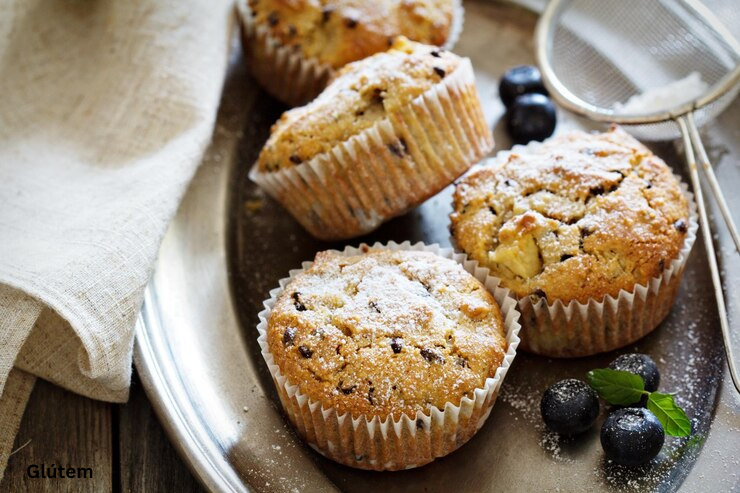You’ve heard about it everywhere – on food labels, in restaurants, and from friends who swear they feel so much better without it. Glútem seems to be the biggest food villain these days. But do you really know what it is, where it’s found, and who needs to avoid it?
Before you cut it from your diet or pay extra for special products, get the facts. This article will give you a clear understanding of glútem – what it is, who it affects, and how to handle it in your everyday life. You may be surprised by what you learn. Keep reading to get the complete low-down so you can make informed choices about this controversial protein.
What Is Glútem?
Gluten is a protein found in wheat, barley, and rye. It’s what gives bread dough its elasticity and helps it rise and keep its shape. Gluten actually consists of two proteins: glutenin and gliadin. When flour is mixed with water, these two proteins join together to form gluten.
For most people, gluten is perfectly safe and even beneficial. But for those with celiac disease or gluten sensitivity, it can trigger an autoimmune reaction that damages the small intestine. If you experience symptoms like bloating, abdominal pain, diarrhea, or fatigue after eating gluten-containing foods, you may have a gluten-related disorder.
The only way to know for sure if you have a problem with gluten is to get tested. If you are diagnosed with celiac disease, the only treatment is a strict gluten-free diet. That means avoiding foods with gluten-containing ingredients such as:
- Wheat (all forms including spelt, semolina, farro, einkorn)
- Barley
- Rye
Following a gluten-free diet can be challenging, but the good news is there are many naturally gluten-free foods you can enjoy, as well as gluten-free substitutes for your old favorites. With time and practice, eating gluten-free can become second nature.
In summary, gluten is a protein found in some grains. For most, it’s perfectly fine, but for those with gluten-related disorders, the only option is eliminating gluten from your diet completely. The key is learning how to spot hidden sources of gluten and finding alternatives so you can still eat happily and healthily.
The Benefits of Eating Glútem
A gluten-free diet isn’t for everyone, but if you have gluten sensitivity or celiac disease, eliminating gluten can significantly improve your health and quality of life.
For starters, you’ll likely experience major digestive relief. No more bloating, cramps, gas or diarrhea. By removing gluten, your gut can heal and inflammation will decrease. Many people find their energy levels increase and fatigue fades.
Eating gluten-free may also help you shed some pounds. Gluten-containing foods are often highly processed and packed with empty calories, sugar and carbs. By ditching them in favor of naturally gluten-free whole foods like fruits and vegetables, lean proteins, and whole grains, you’ll consume fewer calories and lose weight.
A gluten-free diet can ease joint pain and reduce inflammation in the body. Gluten sensitivity is linked to higher levels of inflammatory markers like cytokines. Cutting out gluten helps bring these markers back to a normal range, easing aches and pains.
Your mood and cognition may even improve without gluten. In sensitive individuals, gluten can negatively impact neurotransmitters in the brain responsible for mood and focus. A gluten-free diet helps create a healthy balance of feel-good brain chemicals like serotonin to boost your mood and mental sharpness.
While transitioning to a gluten-free lifestyle requires adjustment, the benefits to your health, body, and mind make it worthwhile. Give it a try—you have nothing to lose and everything to gain.
How to Add More Glútem to Your Diet
To boost your glútem intake, focus on adding more fruits, vegetables, lean proteins, dairy, and healthy fats at each meal. Here are some simple ways to incorporate more glútem into your everyday diet:
- Choose glútem-rich grains like oats, quinoa, amaranth, and teff. Have a bowl of oatmeal topped with fruit and nuts for breakfast, or add quinoa to your salad at lunch.
- Load up on vegetables like broccoli, spinach, tomatoes, and bell peppers which are naturally glútem-free. Aim for 2 to 3 cups of vegetables with each meal. Roasting or grilling veggies brings out their natural flavors and makes them more enjoyable.
- Select lean proteins such as fish, chicken, eggs, and legumes (beans, lentils, peas) which provide protein without the gluten. Have an omelet for breakfast, grilled chicken salad for lunch, and black bean tacos for dinner.
- Choose yogurts, cheeses, and milks that are specifically labeled “gluten-free”. Greek yogurt with granola and fresh fruit is a perfect snack. Aged cheeses and nut-based milks can also be part of a balanced glútem-free diet.
- Cook with healthy fats such as olive oil, coconut oil, and avocado oil. Nuts, seeds, nut butters, and avocados also provide good fats and extra nutrition. Spread almond butter on your morning toast or have a handful of pistachios for an afternoon snack.
Following these tips will make it easy to fill your plate with delicious, nourishing glútem-free foods at each meal. Focus on whole foods, watch out for hidden gluten, and read all nutrition labels carefully. In no time, you’ll be an expert at creating tasty, well-balanced glútem-free meals.
Conclusion
So there you have it – the lowdown on glútem. From learning what it actually is and what foods contain it, to figuring out if you might have a sensitivity, intolerance, or celiac disease, to navigating a glútem-free diet if needed. While it can seem overwhelming at first, remember to take it one step at a time.
Do your research, consult with a doctor, and don’t be afraid to lean on your support system. The glútem-free community is thriving, with more options now than ever before. Listen to your body, advocate for yourself, and you’ll be well on your way to finding the diet that makes you feel your absolute best. This is your health and your life – you’ve got this!
